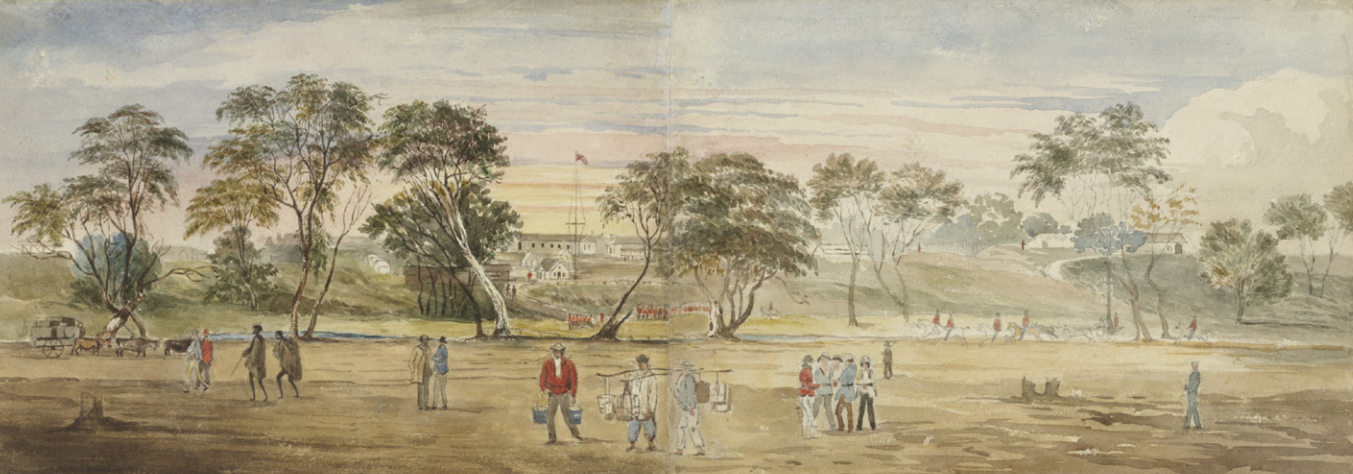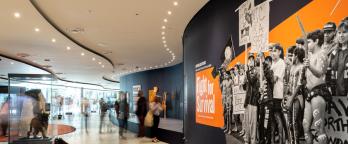Last updated:
On permanent display in the vaults of the Old Treasury Building is an exhibition about the First Peoples of Victoria at the time of the Gold Rush.
The Gold Rush represented a second wave of dispossession for many of Victoria’s First Peoples, their living and hunting grounds destroyed and waterways polluted. The impact on the environment is apparent in the 1855 painting by Edward Roper, reproduced for the exhibition courtesy of the State Library of NSW, entitled Gold Diggings Ararat.
Against the odds, however, some Aboriginal Victorians adapted, finding opportunities on the goldfields. In an unfamiliar landscape, many newcomers settling in Victoria to ‘find their fortune’ depended on Aboriginal guides to point the way. Local Aboriginal people located food, bush medicine and precious waterholes. Demand was also high on pastoral runs with many Aboriginal Victorians employed in roles such as shearing and droving. And Aboriginal people quickly appreciated the value of gold and proved to be expert gold seekers. Many ST Gill paintings, also on display, are reflective of many of these roles.
The Native Police Corps, established in 1842 with more than 100 Aboriginal men, also played an important part in the Gold Rush story, with original records from Public Record Office Victoria’s collection on display including reports from the Superintendent of the Native Police Corps.
“The strength, and wisdom of our ancestors has enabled us to walk in their footsteps towards our own healing, and walk the path of healing our Country. For this we thank you, our Martiinga Kuli Murrup (Ancestral spirits),” Rebecca Phillips, descendant of Caroline Malcolm, Dja Dja Wurrung.
This is a FREE exhibition, no bookings required.
Visit https://www.oldtreasurybuilding.org.au to see what other exhibitions are on display throughout the building.
Location
Old Treasury Building
Spring Street, Melbourne
Image Gallery
Material in the Public Record Office Victoria archival collection contains words and descriptions that reflect attitudes and government policies at different times which may be insensitive and upsetting
Aboriginal and Torres Strait Islander Peoples should be aware the collection and website may contain images, voices and names of deceased persons.
PROV provides advice to researchers wishing to access, publish or re-use records about Aboriginal Peoples




